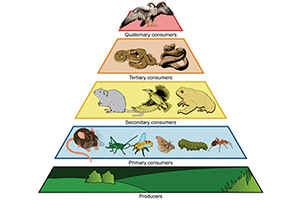


In this module, students use the concepts of food webs and trophic levels to explore populations of marine organisms. Students research an organism in a marine habitat, then the whole class combines their data in a jigsaw activity to produce a food web diagram for that habitat. Next, students collect biomass data during “virtual dives” which they use to determine the relationship between biomass and trophic levels.
The following are all the resources for implementing this module:
 Module Activities
Module Activities VES-V Virtual Dive Tutorial
VES-V Virtual Dive Tutorial Student Data Worksheets
Student Data Worksheets NGSS aligned to this module
NGSS aligned to this module Presentation Graphics Used in this Module
Presentation Graphics Used in this ModuleThe VES-V is visually driven in nature and supported by the third-party "perspectx.com". Color contrast, assistive technology support, and alternate text may be unsupported.
The following activities within the Ocean Food Webs Module may be completed without the use of VES-V software. As some of these were originally designed to be used with it, they will require some adaptation by the educator to make them accessible for students with disabilities.
We welcome your feedback. Please let us know if you encounter accessibility barriers on any of our education content: nos.info@noaa.gov
Date: March 2022
Social